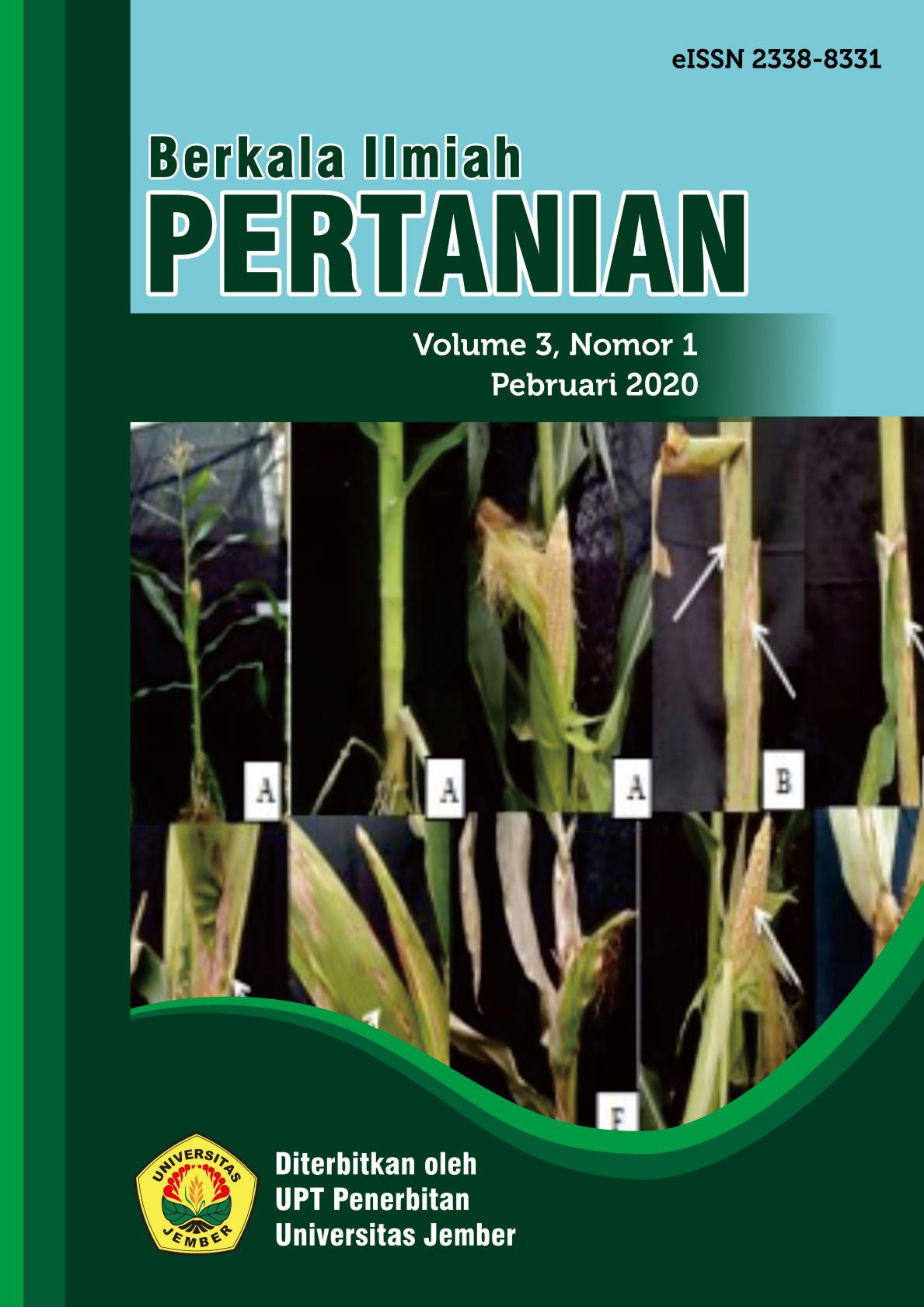UJI EFEKTIVITAS PUPUK ORGANIK PADAT PADA PERTUMBUHAN DAN PRODUKTIVITAS LIMA VARIETAS LOKAL TANAMAN TERONG (Solanum Melongena L.)
Keywords:
Germplasm, Local Eggplant, Organic FertilizerAbstract
Eggplant is a plant that requires appropriate organic fertilization to produce quality fruit. Research on the effect of applying solid organic fertilizer on growth and the level of productivity of local eggplants is the main focus, especially related to growth and yield. The purpose of this study was to determine the growth and productivity of local eggplants against the provision of solid organic fertilizer carried out in paddy fields in Jember. The method used is a completely randomized design (CRD) of two factors, the first factor is the variety factor with 5 levels while the second factor is the factor of solid organic fertilizer consisting of 4 treatment levels so that there are 20 treatment combinations. Each treatment was repeated 3 times, so that there were 60 experimental unit units and each experiment unit consisted of 4 plants. The first factor is pruning with 5 levels including V1: eggplant Phiton, V2: Demak Ijo eggplant, V3: Bonar eggplant, V4: Rondha eggplant and V5: Inayah eggplant. The second factor is the treatment of solid organic fertilizer using 4 levels including P0: without solid organic fertilizer, P1: compost, P2: animal dung (kohe) goat, P3: cow kohe. The results showed that the interaction between eggplants with the trade name Inayah (V5) with the treatment of organic solid fertilizer for cow dung (P3) had optimal number of branches, productive interest and fruit weight. Local varieties of eggplants with the trade name Inayah (V5) have an optimal effect on plant height, number of leaves and productive fruit. The treatment of cow manure (P3) solid organic fertilizer has an optimal effect on plant height and productive fruit.
Keywords: Germplasm, Local Eggplant, Organic Fertilizer.
Downloads
Downloads
Published
Issue
Section
License
Authors who publish with this journal agree to the following terms:
1.Authors retain copyright and grant the journal right of first publication with the work simultaneously licensed under a Creative Commons Attribution-NonCommercial 4.0 International License that allows others to share the work with an acknowledgement of the work's authorship and initial publication in this journal.
2.Authors are able to enter into separate, additional contractual arrangements for the non-exclusive distribution of the journal's published version of the work (e.g., post it to an institutional repository or publish it in a book), with an acknowledgement of its initial publication in this journal.
3.Authors are permitted and encouraged to post their work online (e.g., in institutional repositories or on their website) prior to and during the submission process, as it can lead to productive exchanges, as well as earlier and greater citation of published work (See The Effect of Open Access).




















